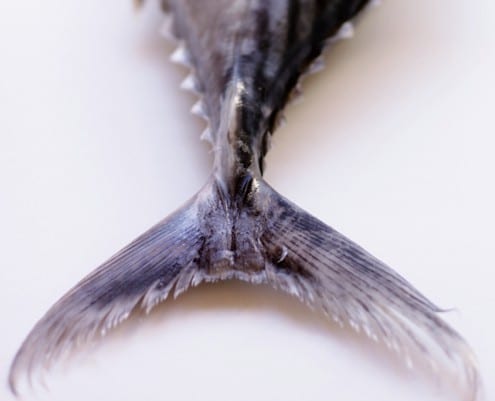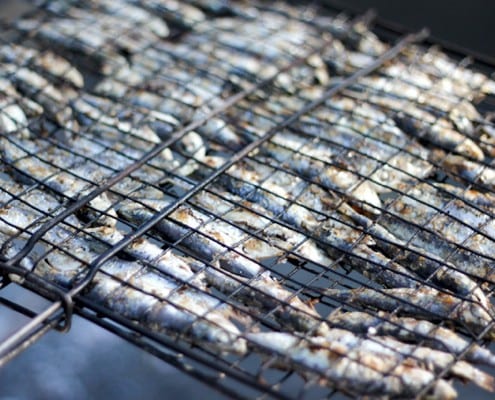Emiko Davies with some valuable tips on how and where to find information on sustainable fish and seafood.
By Emiko Davies
They’re not as glamorous as salmon, fresh tuna or most other fish favourites, but humble sardines are no less delicious and are certainly a better choice if you’re mindful about supporting something that’s not currently damaging the planet or contributing to the endangered species list.
If this is the first time this thought has even crossed your mind, take a look at some of these excellent articles on the issue such as this one by The Food Sage who asks whether food writers should be more responsible in informing consumers about sustainable food choices, Good Fish Bad Fish, and Italy’s wonderful Slow Fish website.
Afterwards you may, ask yourself why is it that restaurants, chefs, cookbooks and supermarkets don’t make more of an effort to spread the word of the scary damage that is being done by over-fishing, aggressive forms of fish farming or fishing methods. That said, there are important exceptions, such as chef Ben Shewry from Attica restaurant in Melbourne, whose mesmerizing video “Kobe and the Sea” on the sustainability of abalone and passing on traditions to his son may bring you close to tears, and the US supermarket Whole Foods, which has recently made the leap to selling sustainable fish only.
Luckily it’s easier than you may think to figure out the best seafood choices in your area, thanks to numerous resources that bring choosing sustainable seafood to your fingertips.
If you’re in Australia, the Marine Conservation Society has a very handy sustainable seafood guide app that you can download for free that makes deciding your next meal, whether in the markets or a restaurant, a very easy one – your favourite fish are simply labelled “say no”, “think twice” or “better choice”. You may be surprised by the results.
The Marine Conservation Society’s UK version is the Good Fish Guide, with an easy 1-5 numbering system and a very thorough description of the way these fish are caught locally, any sustainability issues and any good alternatives.
And for the US, the Monterey Bay Aquarium in California has created a very handy map of the US with downloadable sustainable seafood guides according to the area where you live, including a special sushi guide! Similar to the Australian one, seafood is labelled accordingly: “best choices”, “good alternatives” and “avoid”. Simply download the pages, print them out and fold them up to keep handy in your wallet.
Italians need look no further than Slow Food’s above-mentioned Slow Fish website (available in English, French, German and Spanish too). It’s worth a look at every single page they have on offer, from the traditional recipes according to region to the “which fish?” guide. From their website comes this little piece of food for thought:
Caught between the temptation to ignore information that makes us uncomfortable and confused and the instinct never to eat fish again, we can only ask “But what difference can I make?” The Slow Fish campaign gives us the opportunity to become more aware and curious, to discover new culinary adventures and to actively participate in our own small way in protecting the resources of the sea. Everyone, whether consumer, restaurateur or fishmonger, can make a difference.
And of course, sardines aren’t the only fish that are safe on the menu – check out the guides above to discover your sustainable favourites locally.














Good article and thanks for the links!